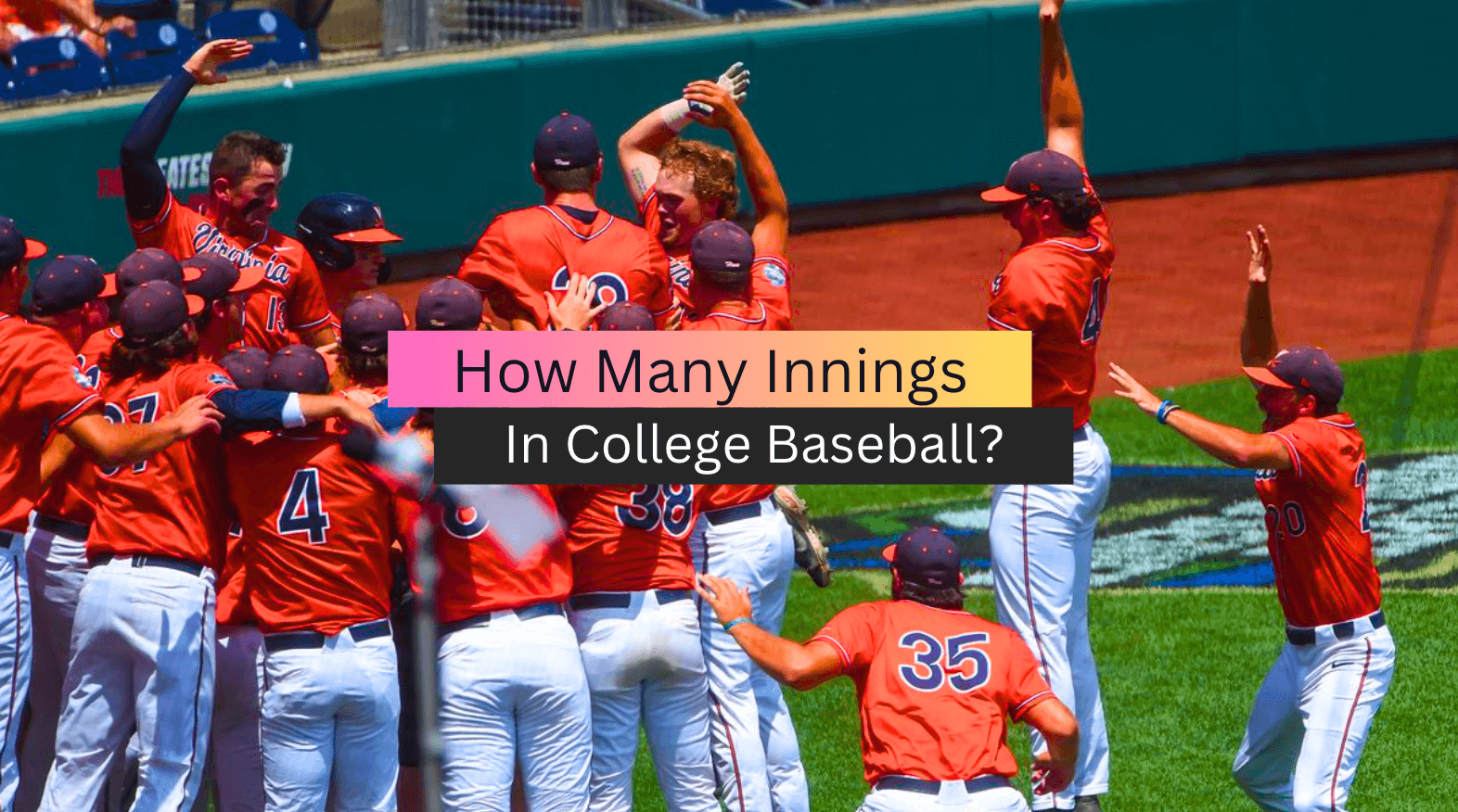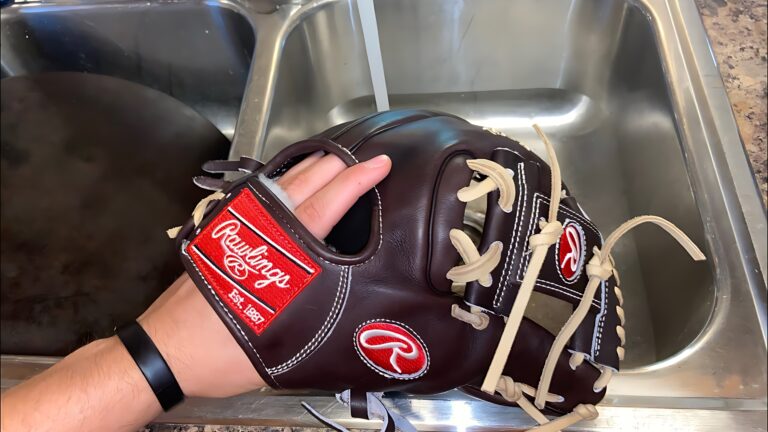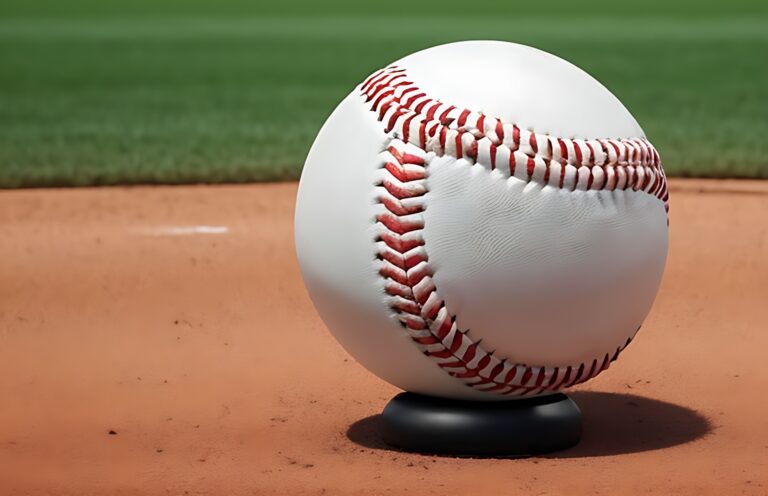How Many Innings In College Baseball?
If you’re a baseball fan and wondering about the length of a college game, you may be curious about how many innings in college baseball.
In general, a standard college baseball game consists of 9 innings, much like a professional Major League Baseball game. However, there are some variations that can affect the number of innings played.
For example, if the game is tied after 9 innings, it may continue into extra innings until a winner is determined. In most cases, this means playing additional innings in a sudden death format, with the first team to score a run being declared the winner.
Additionally, there are some instances where games may be shortened due to weather conditions or other factors. For example, if a game is called due to rain or other inclement weather after 5 innings have been played, it may be considered a complete game and the team with the most runs at that point would be declared the winner.
It’s worth noting that the number of innings played in a college baseball game can also vary depending on the level of competition. For example, in some youth or amateur leagues, games may be shortened to 7 innings to accommodate for shorter attention spans or limited field availability.
In this article, we’ll take a closer look at the standard number of innings played in college baseball games, as well as any other important variations to be aware of.
Number of Innings in College Baseball
College baseball is a popular sport in the United States and is played by many universities and colleges across the country. Like professional baseball, college baseball games are played in innings. However, the number of innings in college baseball can vary depending on the level of competition and the rules of the conference or organization that governs the sport.
In the NCAA (National Collegiate Athletic Association), which is the main governing body for college sports in the US, college baseball games are typically played for nine innings. However, some college baseball games can be shortened to seven innings in doubleheaders, especially during the regular season.
In addition, some college baseball conferences and organizations may have different rules for the number of innings played in games. For example, the National Junior College Athletic Association (NCAA) allows for seven innings in regular-season games and nine innings in playoff games.
It’s worth noting that college baseball games can also end in a tie if the game is called due to weather or other circumstances that make it impossible to continue playing. However, tie games are relatively rare and most college baseball games are played until there is a clear winner.
How Does the Mercy Rule Apply in College Baseball?
The Mercy Rule, also known as the Run-Rule, is a rule used in baseball to end games early when a team has a substantial lead. In college baseball, the Mercy Rule can be applied in two different ways depending on the conference and level of play.
The first way the Mercy Rule can be applied is through a time limit. Some conferences have adopted a rule that limits the length of games. If the game reaches the time limit before the end of the final inning and one team is ahead by a certain number of runs, the game ends immediately. The number of runs required to trigger the Mercy Rule varies by conference but typically ranges from 8 to 10 runs.
The second way the Mercy Rule can be applied is through a run differential. If one team has a lead of 10 or more runs at the end of the 7th inning (or the completion of the 5th inning if the home team is ahead), the game is over. In this case, the game is officially called a Mercy Rule win for the team that is ahead.
When Does the Mercy Rule Usually Apply
The Mercy Rule, also known as the “run rule” or “slaughter rule,” is a rule that is typically used in sports to prevent the further humiliation of a losing team. The rule applies when one team has a significant lead over the other, and it is evident that the losing team has little chance of winning or making a comeback.
The specific criteria for when the Mercy Rule applies can vary depending on the sport and the level of play. However, in most cases, the Mercy Rule is invoked when the losing team is trailing by a predetermined amount of points or runs, or when they are behind by a certain number of goals, innings, or sets.
The application of the Mercy Rule can help to promote sportsmanship and fair play by preventing unnecessary blowouts and reducing the risk of injury or exhaustion for players.
What are Other College Baseball Game Regulations?
College baseball games are regulated by a set of rules established by the National Collegiate Athletic Association (NCAA). Apart from the basic rules of baseball, there are several other game regulations that apply to college baseball games. Here are some of them:
- Bat Regulations: The NCAA has specific regulations regarding the type of bats that can be used in college baseball games. The diameter of the barrel cannot exceed 2 5/8 inches, and the length-to-weight ratio cannot be greater than -3.
- Pitching Regulations: College baseball games have pitch count limits in order to protect the health of the pitchers. The NCAA allows a maximum of 14 pitches per inning, and a pitcher cannot throw more than 125 pitches in a game.
- Run Rule: The run rule is in place to prevent lopsided games from dragging on too long. If a team leads by 10 runs or more after seven innings, the game is called.
- Time Limit: College baseball games have a time limit of 3 hours and 15 minutes, and no new inning can begin after that time.
- Instant Replay: Instant replay is used to review certain plays in college baseball games, such as close calls at the plate or on the bases.
- Designated Hitter Rule: College baseball allows for the use of a designated hitter, which means that a player can be designated to bat for the pitcher without having to play in the field.
These are just a few of the regulations that apply to college baseball games. Adherence to these regulations helps to ensure fair play and safety for all players.
What Determines the Number of Innings in a College Baseball Game?
The number of innings in a college baseball game is typically determined by the rules of the governing body that oversees the game. In the United States, college baseball is regulated by the National Collegiate Athletic Association (NCAA), which sets the rules and regulations for all college sports.
According to NCAA rules, college baseball games consist of nine innings, with each team given the opportunity to bat and play defense in each inning. However, there are some exceptions to this rule, particularly in the case of games that are called due to weather or other circumstances.
If a game is called before it is considered a complete game, which is typically after five innings have been played, the game may be rescheduled to be played in its entirety at a later date. However, if the game has progressed to at least five innings and one team is leading, the game may be considered complete and the leading team declared the winner.
In some cases, extra innings may be played if a game is tied at the end of nine innings. In college baseball, extra innings are typically played until one team wins, with the first team to score more runs in an inning declared the winner.
What Calls for a Seven or Nine-Inning Game?
In most professional baseball leagues, a game is typically played over nine innings, but there are certain circumstances where a game may be scheduled for seven innings or extended to nine innings.
Here are some reasons for playing a seven-inning game:
- Doubleheaders: In a doubleheader, two games are played in one day, and to help reduce the strain on players, especially pitchers, each game is often reduced to seven innings instead of nine.
- Minor leagues: Some minor leagues have adopted seven-inning games as a way to reduce costs and shorten the length of the game.
- Time constraints: In some situations, such as during a tournament or when a game has been delayed due to weather, a seven-inning game may be scheduled to ensure that the game can be completed within a certain time frame.
As for nine-inning games, they are the standard length for most professional baseball games, but they can be extended to extra innings if the game is tied after nine innings. Extra innings are played until one team scores more runs than the other team during an inning.
Conclusion
In conclusion, college baseball games are typically played over nine innings, which is the same as professional baseball games. Each inning consists of two halves, with each team getting a chance to bat and play defense. However, in some cases, games may be shortened due to weather conditions, time constraints, or other unforeseen circumstances. Additionally, college baseball games may also employ different rules and regulations compared to professional baseballs, such as the use of designated hitters and different pitching restrictions.
FAQs
Is there 12 innings in baseball?
No, ordinarily a baseball game consists of nine regulation innings. However, the number of innings can vary depending on the level of play.
In softball and high school baseball games, there are typically seven innings, while in Little League Baseball, there are six innings.
Each inning is divided into halves, with the visiting team batting first, followed by the home team.
During each half-inning, the teams alternate between playing offense and defense, with the objective being to score more runs than the opposing team.
While extra innings may be played in the event of a tie score, a regulation game typically consists of nine innings.
Can baseball end in 7 innings?
In professional baseball, specifically in Major League Baseball (MLB), the standard game length is nine innings. However, there are certain situations in which a game can end after seven innings, but this is not the norm.
One example of a situation where a game can end after seven innings is when the game is called due to inclement weather, or any other conditions that make it impossible to continue playing. In such a case, if the game has completed at least seven innings, and the home team is leading, then the game will be considered complete, and the home team will be declared the winner. If the visiting team is leading, or if the game is tied, then the game will be suspended and continued at a later time.
Another instance where a game can end after seven innings are in certain amateur or youth leagues, where the game length is shorter than the standard nine innings. In these leagues, the game may be scheduled for seven innings, and thus, the game will end after the completion of seven innings.
However, in professional baseball, a game will usually continue until the end of the ninth inning, regardless of the score. If the game is tied after nine innings, then extra innings will be played until one team finally scores more runs than the other team. In fact, in the MLB playoffs, games can continue into many extra innings, until one team finally wins.
What is the longest college baseball game ever?
The longest college baseball game on record took place on March 26, 2011, between Fresno State and San Diego. This game lasted an incredible 7 hours and 12 minutes, setting a new record for the longest-timed game in college baseball history.
The game took place just two years after the previous record holder, a matchup between Texas and Boston College that lasted 7 hours and 3 minutes. The Fresno State-San Diego game surpassed that mark by a full 9 minutes, making it an incredible feat of endurance for both teams.
It’s hard to imagine the physical and mental fatigue that the players must have experienced during the course of such a lengthy game. They would have had to remain focused and alert for an extended period of time, while also contending with the physical strain of playing a full baseball game and then some.
Despite the grueling nature of the game, both teams managed to keep their composure and continue to battle it out on the field. In the end, it was Fresno State who emerged victorious, winning the game 6-5.
How many innings are in baseball?
In baseball, the game is divided into nine innings, each of which is further divided into two halves.
During the top half of the inning, the players of one team take turns batting and attempting to score runs, while the other team plays defense and tries to prevent the offensive team from scoring.
In the bottom half of the inning, the teams switch roles, with the team that was playing defense now taking their turn at bat and vice versa.
The team with the most runs at the end of nine innings is declared the winner. If the game is tied at the end of the ninth inning, extra innings may be played until a winner is determined.
Each team typically has nine players on the field at a time, and each player has a specific position and role to play in both offense and defense.







